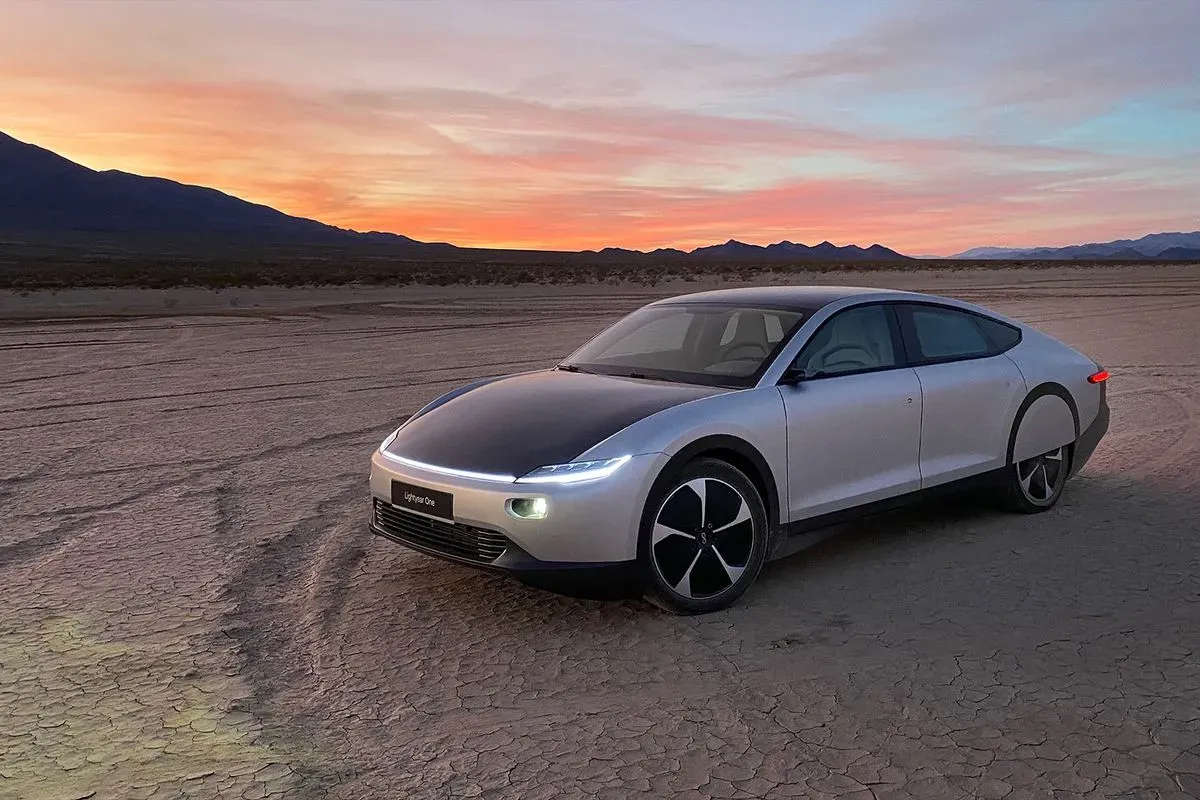A car that charges itself with sunlight — it sounds like science fiction, but for Lex Hoefsloot and Koen van Ham, it’s been a reality for over a decade. Their journey began at the Eindhoven University of Technology, where they joined the Solar Team: a group of young engineers experimenting with solar-powered vehicles. In 2014, their team won the prestigious TechCrunch award, a milestone that would dramatically reshape their future.
The prize not only brought international recognition but also sowed the seeds of an ambitious plan: Lightyear. The goal? To develop a commercial car powered largely by solar energy. With solar panels integrated into the roof and hood, the vehicle generates its own energy. The result is an innovative approach to mobility—one that reduces emissions and offers independence from the electrical grid.
The Next Nature Museum, led by founder Koert van Mensvoort, recently added this iconic vehicle to its collection of future objects. Lightyear’s solar car is showcased not only as a technological feat, but also as a symbol of our vision for the future: innovative, sustainable, and speculative.
Building a Dream
The road to founding Lightyear was anything but smooth. The young entrepreneurs quickly faced the harsh realities of funding and manufacturing. “From the very start, financing was a struggle,” says Koen van Ham. Lex Hoefsloot adds, “It took an enormous amount of energy and was incredibly stressful. I’m not someone who naturally enjoys constantly having to convince people. But we had to do it, especially in the early years.”
Constructing the vehicle itself was also a major challenge. Many of the components needed for their innovative design simply didn’t exist yet. “That took a lot of time,” says Lex. “Plus, there are very few suppliers, and sometimes you’d pay thousands of euros for a rear seat. That made us wonder: shouldn’t we just build it ourselves?”
Still, their belief in the solar dream kept them going. The first prototypes didn’t just shape the project — they gave it credibility. “The moment the dream had a face — a design, a model — people suddenly understood it,” Koen explains. “An abstract idea is hard to believe in, but when you can physically see it, it becomes tangible.”

Growing as a Team
But trying to do everything themselves turned out to be unsustainable. They needed fresh perspectives to build the car. “In the beginning, we didn’t feel that need; we wanted to do everything ourselves,” says Koen. “Eventually, we realized that there has to be a balance. Starting an organization was hard for me.”
The looming threat of competition also played a background role. “I’ve been afraid of it at times,” says Lex. “But again and again, we overestimated others’ progress and underestimated our own, haha. Delays made us feel like we were falling behind, even when that wasn’t really the case.”
Looking Ahead
Despite the bumps along the road, Lex and Koen managed to create an elegant concept. And although production was halted due to Lightyear’s bankruptcy and its repositioning after the 2023 restart, the solar dream is very much alive. Koen and Lex still believe in the potential. “Cars are becoming increasingly efficient, so they’ll inevitably evolve toward solar,” says Koen. “But the pace is slow — unless someone takes the lead. Look at Tesla: without them, electric driving wouldn’t be where it is today. That kind of leadership is crucial.”
For others with big dreams, Lex has a clear message: “Join a student team. And if you’re in doubt: just do it. Don’t wait for the perfect opportunity — it never comes. We’re capable of more than we think. Think big, act small.” Koen adds, “Keep creating beautiful things. Not just in appearance, but from intrinsic value. When something feels right and looks good, it’s incredibly motivating.”
Next Nature Museum
For anyone who wants to see where a dream can lead, the Next Nature Museum in Eindhoven offers the chance. There, Lightyear is on display as a future object — a sun-drenched promise on wheels.
“A car that charges itself with sunlight is next nature,” says museum founder Koert van Mensvoort. “It’s technology that collaborates with nature instead of fighting it. Lightyear is a perfect example of how we explore the future: visionary, bold, and bordering on the impossible.”


Comments (0)
Share your thoughts and join the technology debate!
No comments yet
Be the first to share your thoughts!